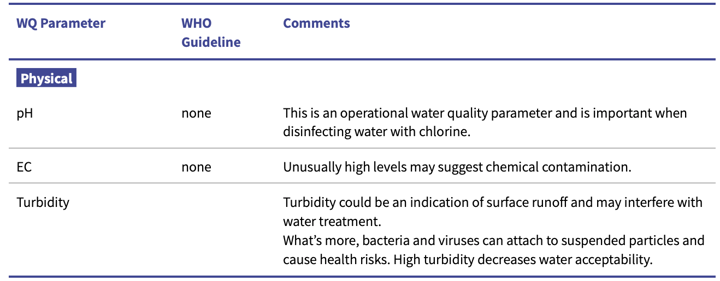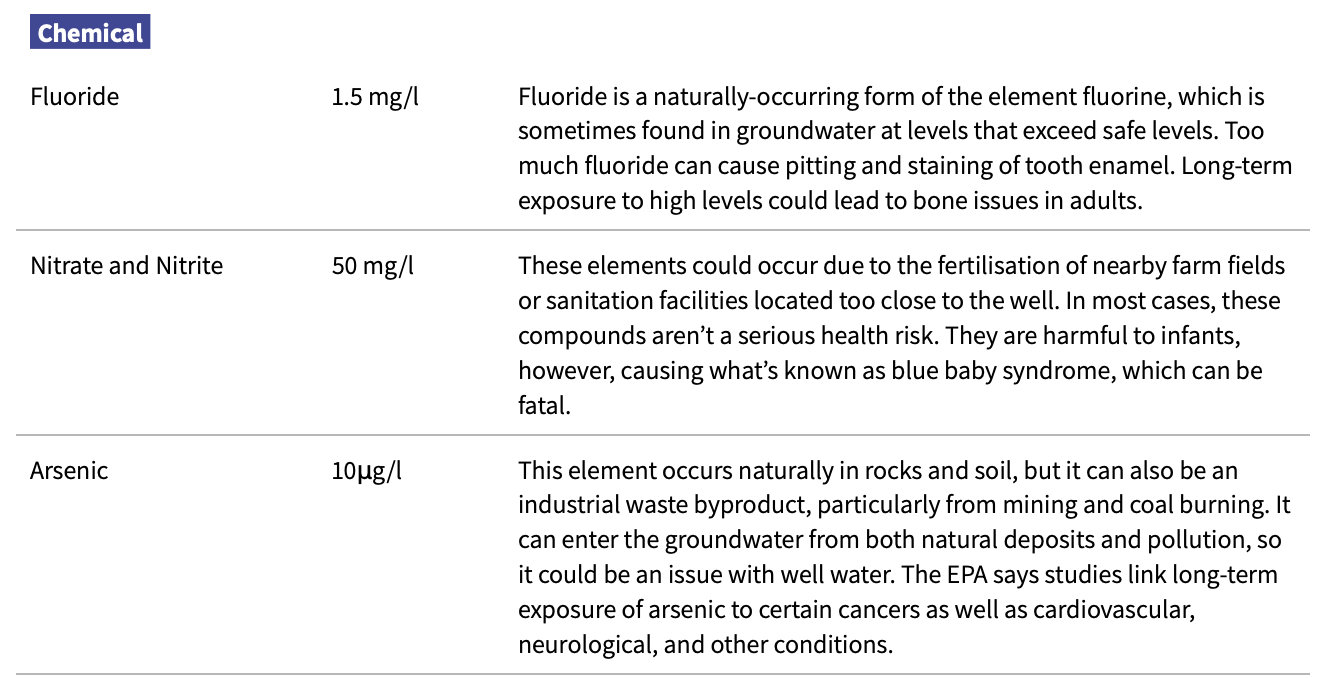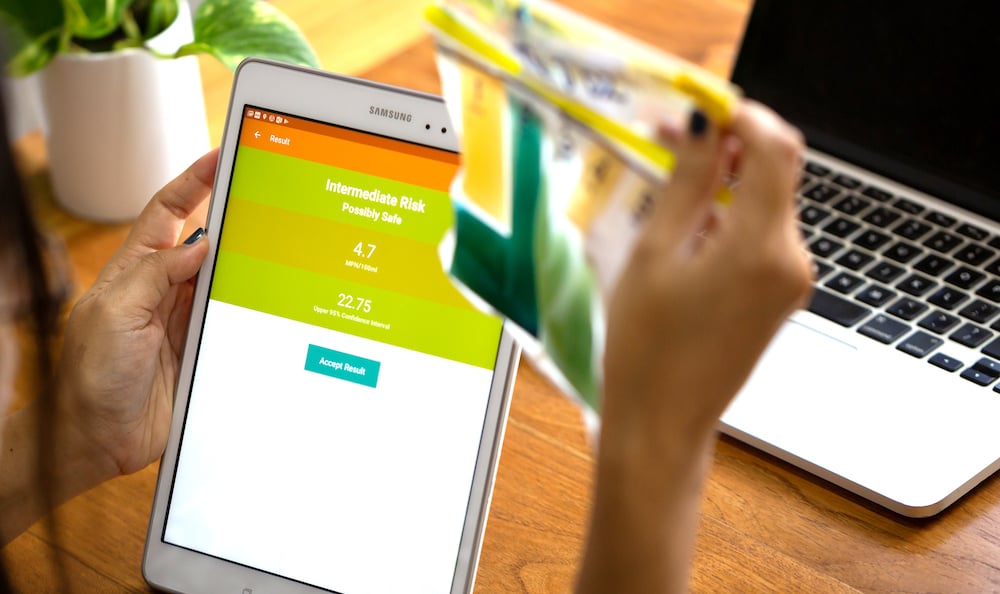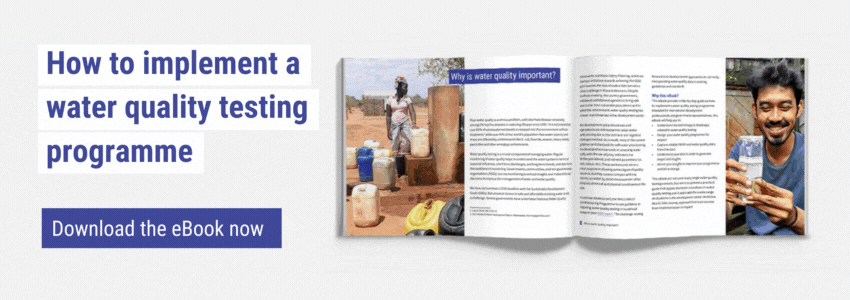Poor water quality is a serious problem, with diarrheal disease remaining among the top five diseases in reducing lifespan since 19901. It is estimated that over 80% of wastewater worldwide is released into the environment without treatment2, while over 40% of the world’s population face water scarcity and many are affected by contaminants like E. coli, fluoride, arsenic, heavy metals, pesticides and other emerging contaminants.
Water quality testing is a crucial component of managing water. Regular monitoring of water quality helps to understand the water system in terms of seasonal influences, short term discharges, and long term trends, and data forms the backbone of monitoring. Governments, communities, and non governmental organisations (NGOs) can use monitoring to extract insights and make informed decisions to improve the management of water and water quality.
So how do you design a water quality testing programme to ensure that it contributes to safe water for all?
Step one: Define the programme objectives and the partners’ expectations
Understanding the programme application
There are a number of different applications for a water quality testing programme - from safe water for domestic use to environmental protection. Each application presents a unique backdrop for designing a water quality testing programme and serves a critical purpose in the development sector. Here is a brief overview of the most common applications in order of increasing design complexity.
-
Drinking water source selection and confirmation: The most prevalent use of WQ testing in the development sector is for the selection or confirmation of a specific water source to be used for safe drinking water.
-
Humanitarian and emergency responses: In rapid needs assessments, the water quality data is used for the selection of emergency water sources and requires very little post-processing.
-
Regional mapping of safe water access: Another common use for water quality testing is in determining safe water availability and WASH-related health indicators.

-
Long term monitoring of water supply systems: The aim of long term monitoring programmes is to ensure the sustainability and acceptability of a drinking water supply. This could be a hand pump, kiosk or full pipe network system. In any case, you should follow a Water Safety Plan approach for good quality assurance.
-
Assessment of ambient waters and effluents: These assessments are done in the context of ecosystem health and consider impacts to aquatic life and agriculture, in addition to humans.
Understanding the programme objectives
The relevant WQ programme objectives may sit within a larger hierarchy of objectives. We recommend that you identify the full hierarchy and then place boundaries around the WQ programme objectives for detailed design. The relevant objective would likely align with one of the categories described above. The table below shows a hierarchy of objectives and can be used to identify the most relevant objective for your programme.

It is good to know what the overall objectives are as stated in one and two, but the third tells us that this is essentially part of a performance monitoring programme. As follow up, you could ask if the results of any WQ tests were done prior to rehabilitation, and what the other factors are for assessing performance.
Understanding the partners’ expectations
In identifying the partners, it is important to keep in mind that the organisation of your main contact may not be the only one using the data. For example, let’s say that a UN agency requests that water samples be collected and tested from every water source in District A. Upon further questioning, the UN agency may share that it is partnering with 10 other NGOs who will be the actual organisations implementing a water infrastructure rehabilitation programme. A full understanding of stakeholders is critical to developing a correct design and knowing what questions to ask next, and who else needs to be interviewed.
Step two: Select the water quality testing parameters
Roughly speaking, water quality can be divided into three domains:
-
Microbial contamination refers to the presence of disease-causing (or pathogenic) microbes, which are generally introduced to water sources by contact with faecal material.
-
Chemical contamination refers to metals, organic compounds and other chemicals that present potential health risks. Often they are a result of human activity like industrial waste disposal and agriculture, but also may be naturally occurring such as the elevated arsenic levels observed in many parts of Bangladesh.
-
Physical contamination refers to conditions relating to the water’s physical condition, for example colour, odour, temperature and turbidity. Most of these present no direct health risk, but they can influence other factors (e.g. soil particles in turbid water can shelter bacteria) and sometimes make water unpleasant to drink.
In selecting parameters, there are several key factors in regards to water quality.
Local and international drinking water standards act as the primary reference for selecting testing parameters. Local standards may be obtained online from government websites, or by asking the relevant government department (i.e. Ministry of Water). As for international drinking water quality guidelines, the WHO guidelines are a good reference.3
Land and water usage in the zone of influence are also primary considerations for parameter selection. Agricultural, mining and other industries have their own typical Potential Contaminants of Concern (PCOC) that should be included in the testing.
There are a number of additional information areas that likely provide insight to potential water quality concerns. Below are some recommended by the Centre for Affordable Water and Sanitation Technology (CAWST, 2013).4
-
Health care data: Community health centres or hospitals usually collect some level of information about the numbers of patients and types of illnesses that are treated. This information can indicate how illnesses are spreading throughout the area. The District Health Information Software 2 (DHIS2) is an open source, web-based health management system platform used in over 100 countries and can be used as a source for health care data.
-
Household and community data: Indirect and direct questions related to water quality are typically asked in household and community surveys. This may include describing the physical attributes of their drinking water or whether people are getting sick from drinking the water.
-
Natural disasters: Natural disasters such as flooding, earthquakes and landslides often contaminate water sources. Depending on the type and intensity of the natural disaster, you may need to consider microbiological contamination and high turbidity.
-
Geographic location: Due to natural geological formations, some regions may be prone to arsenic, fluoride or other chemical contamination.
-
Secondary Information (WQ reports): Government agencies, research centres or international organisations may carry out a national or regional survey and report on the surface and groundwater quality. This type of information provides a general idea of the local situation, which can help you to determine the water quality parameters required for the area.
The list of parameters in international guidelines is very long, and in the absence of any regional and site specific information, it can be a struggle to decide which parameters to select. If we could only choose one parameter, then it would be E. coli, due to its prevalence in the development context. Below, you can find an expanded list of parameters covering the typical contaminants of concern for safe drinking water. We recommend that this be considered the minimum in the absence of information from literature and secondary data.
|
WQ Parameter |
WHO Guideline |
Comments |
|
.Physical. |
||
|
pH |
none |
This is an operational water quality parameter and is important when disinfecting water with chlorine. |
|
EC |
none |
Unusually high levels may suggest chemical contamination. |
|
Turbidity |
Turbidity could be an indication of surface runoff and may interfere with water treatment. |
|
|
.Chemical. |
||
|
Fluoride |
1.5 mg/l |
Fluoride is a naturally-occurring form of the element fluorine, which is sometimes found in groundwater at levels that exceed safe levels. Too much fluoride can cause pitting and staining of tooth enamel. Long-term exposure to high levels could lead to bone issues in adults. |
|
Nitrate and Nitrite |
50 mg/l |
These elements could occur due to the fertilisation of nearby farm fields or sanitation facilities located too close to the well. In most cases, these compounds aren’t a serious health risk. They are harmful to infants, however, causing what’s known as blue baby syndrome, which can be fatal. |
|
Arsenic |
10μg/l |
This element occurs naturally in rocks and soil, but it can also be an industrial waste byproduct, particularly from mining and coal burning. It can enter the groundwater from both natural deposits and pollution, so it could be an issue with well water. The EPA says studies link long-term exposure of arsenic to certain cancers as well as cardiovascular, neurological, and other conditions. |
|
Chlorine |
5 mg/L |
This value is the health-based guideline. Chlorine is often used for water treatment. |
|
.Bacteriological. |
||
|
E. coli |
0 MPN/100 ml |
Provided indication of contamination by fecal coliforms or other harmful bacteria. This is important because fecal pollution is the major cause of water-borne diseases in humans. |



Step three: Set up your sampling design, sampling frame and sampling plan
The technical design of a sampling plan is most dependent on the programme objectives and nature of the WASH indicators measured, as is evident when establishing the sampling frame. The sampling frame is defined as the target population in which the samples are taken, and identifying the target population may not be as straightforward as it may seem. The key questions to ask are as follows:
-
Is the objective to select a safe water source?
-
Are the water quality results used to determine the status of WASH indicators, such as whether a community has access to safe water? If yes, is the object of those indicators a people group, school, health facility or water point?
-
Are the water quality results used to evaluate the performance of a programme?
Based on these answers, you would first identify the nature of the target population, whether it be schools, health facilities, communities, or water points, and there could be more than one sampling frame depending on WASH indicators involved. Next would be to define the scope of the total population. For example, it could be all the schools within a geographical area, or only the schools that received assistance from NGOs.
Once the sampling frame is established, then you decide on the cross-sectional and longitudinal scope of the sampling. The overall scope of a water quality testing is a tradeoff between resources available and required water quality data. The higher the accuracy and coverage, the more resources are required. If and how much water quality testing is required in a programme should be based on available budget, capacity of the staff to conduct testing, availability of testing equipment and consumable items, logistics involved in sample collection and transportation, and the seasonality and variance of contamination in sources.5
Step four: Create an operational and logistics plan
Once the testing parameters and sampling strategy is clear, the next step is to create an operational plan and arrange logistics. An operational plan entails the activities and milestones to meet the programme objectives. It also includes the roles and responsibilities and timing and costs of the activities.
It is important to define roles and responsibilities in the beginning. Build a team that will be responsible for all different required activities and deliverables. A Gantt chart could be a very useful tool for defining the project schedule including roles and activities. For each activity/deliverable, other skills are required. For example, capturing water quality data requires, depending on the testing method, a water quality/chemistry background, while understanding data requires a data analysis background. Therefore, it is important to create an overview of who is in the team and who has the right skillset to perform certain parts of the Data Journey, from programme design and water quality testing to data analysis and report writing. It is also important to find out if there are gaps which can be complemented by finding staff outside the existing team.
In addition to the usual logistical considerations applicable to any country-scale data collection effort, for a water quality assessment additional logistics and planning issues are important, such as:
-
Procurement of equipment for field testing or lab testing (e.g. sensors and/or photometers).
-
Procurement of consumables in field tests, such as reagents and strip tests.
-
Procurement of data collection hardware (e.g. mobile phones).
-
Training of enumerators in following proper procedures for taking water samples and performing in-field tests.
For a thorough breakdown of how to implement a water quality testing programme, download our eBook!
Resources:
-
Lancet 2020; 396: 1204–22
-
2017 UN World Water Development Report: Wastewater, the Untapped Resource.
-
“Safe drinking water does not have any significant risk to health over their lifetime. Safe drinking water has microbiological, chemical and physical characteristics that meet World Health Organization (WHO) guidelines or national standards for drinking water quality” (WHO/UNICEF, 2013).
-
CAWST (center for affordable water and sanitation technology), “Introduction to drinking water quality testing manual,” 2013
-
World Health Organization (2012). Rapid Assessment of Drinking-Water Quality: A Handbook
for Implementation. WHO, Geneva, Switzerland. Available at:
www.who.int/water_sanitation_health/publications/2012/rapid_assessment/en/index.html



